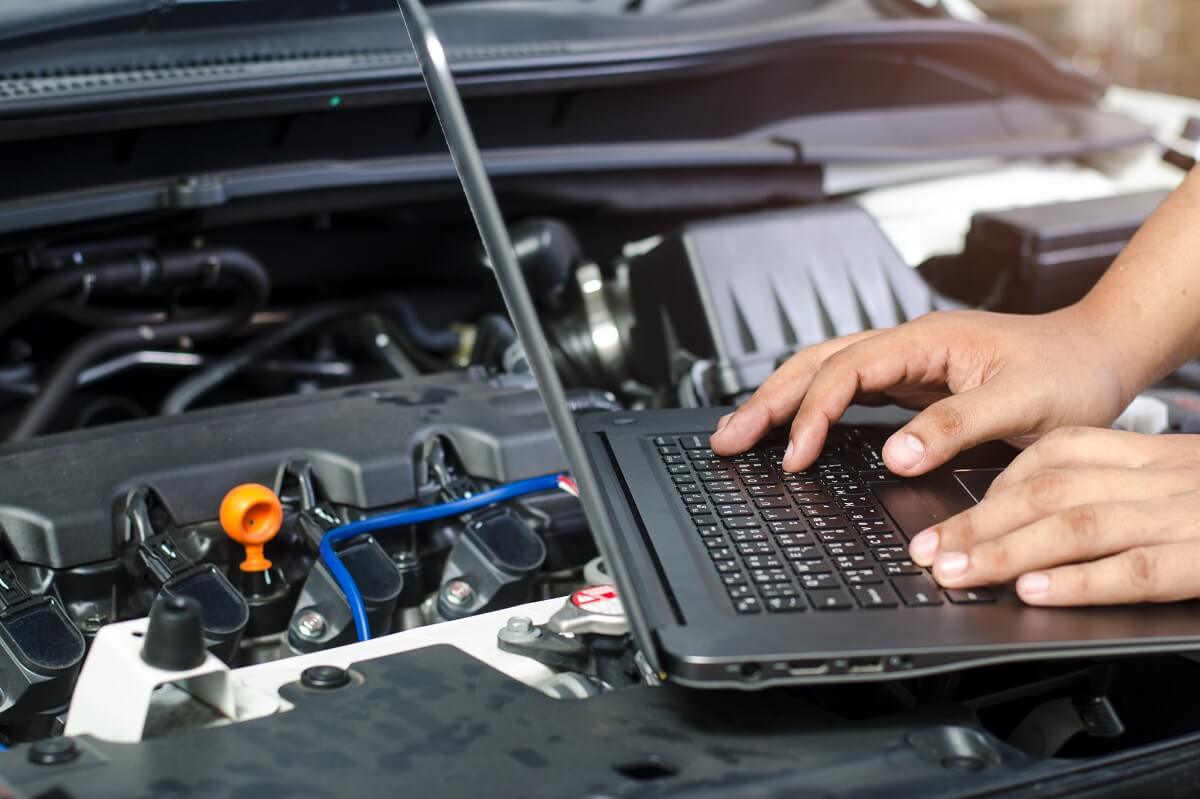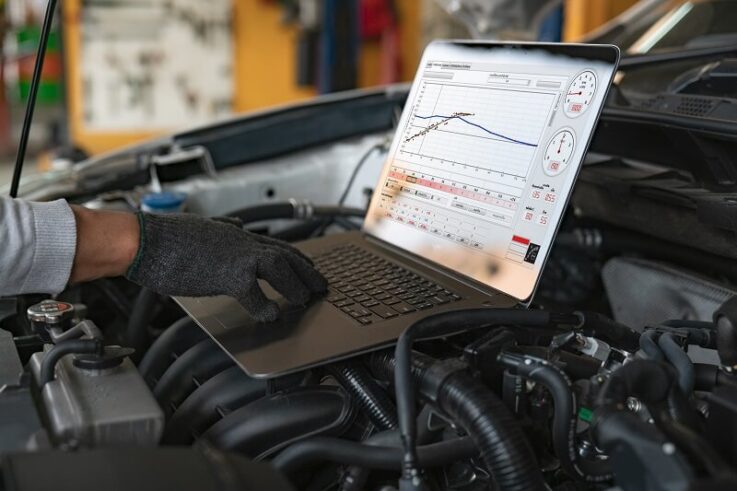Car ECU remapping, or chip tuning or engine tuning, is modifying a vehicle’s electronic control unit (ECU) to optimise performance. The ECU is responsible for managing various aspects of the engine, including fuel injection, ignition timing, and turbo boost.
The software parameters within the ECU are adjusted through remapping to enhance power, torque, and fuel efficiency. This is achieved by reprogramming the ECU’s settings to optimise the engine’s performance characteristics within safe limits.
Car ECU remapping can be a popular option among car enthusiasts who seek to maximise their vehicle’s power output and improve the overall driving experience. However, it is essential to consult with experienced professionals to ensure proper tuning and avoid potential risks or damage to the engine.
How Does it Work?
Car ECU remapping works by modifying the software parameters stored in a vehicle’s electronic control unit (ECU). The ECU is a computer that receives inputs from various sensors throughout the vehicle and controls the engine’s performance based on those inputs.
The remapping process involves connecting a specialised tool or device to the vehicle’s OBD (On-Board Diagnostics) port, which allows access to the ECU’s programming.
Once connected, the existing software or “map” within the ECU is read and analysed. Skilled technicians or tuners then adjust specific parameters within the map, such as fuel injection timing, turbocharger boost pressure, and ignition timing.
These adjustments are tailored to optimise the engine’s performance, considering factors such as the vehicle’s make, model, engine specifications, and the desired outcome of the remap.
After the adjustments are made, the modified map is reprogrammed into the ECU, replacing the original software. This new map instructs the ECU to operate the engine with the revised settings, resulting in improved performance characteristics such as increased power, torque, and fuel efficiency.
Why Should You Consider Car Remapping?

There are several reasons why you might consider car remapping:
Enhanced Performance: Car remapping can unlock the hidden potential of your vehicle’s engine, providing noticeable improvements in power and torque. This can result in faster acceleration, smoother power delivery, and enhanced performance.
Increased Fuel Efficiency: You can improve your vehicle’s fuel efficiency with a carefully optimised remap. Adjusting the fuel injection and other parameters allows the engine to operate more efficiently, leading to better mileage and reduced fuel consumption.
Customisation: Car remapping allows you to tailor the engine’s characteristics to your preferences. Whether you prefer a more spirited driving experience or a smoother, more relaxed ride, a remap can be customised to match your driving style and preferences.
Cost-Effective Performance Upgrade: Car remapping offers a cost-effective alternative to traditional performance upgrades such as engine modifications or aftermarket parts. It can provide significant performance gains without physical modifications, making it more affordable.
Versatility: Car remapping is a versatile solution for a number of vehicles, including both petrol and diesel engines. Whether you own a sports car, a family sedan, or an SUV, remapping can potentially enhance its performance and driving experience.
It’s important to note that reputable and experienced professionals should carry out car remapping to ensure proper tuning, reliability, and safety. Additionally, it’s essential to check if remapping will void any existing warranties or affect insurance coverage, as policies may vary.
Stages of Car Remapping

Stage 1 Remap: Unleashing the Hidden Power
A Stage 1 remap involves optimising a vehicle’s Electronic Control Unit (ECU) parameters with stock components. It focuses on increasing power while retaining the stock exhaust system, intake, airbox, intercooler, and catalytic converter.
Key Features of Stage 1 Remap
Stock Component Compatibility: Stage 1 remap works harmoniously with the vehicle’s original hardware, making it a non-invasive upgrade.
Enhanced Power Output: By unlocking the potential power left untapped by the manufacturer, a Stage 1 remap can significantly increase horsepower and torque.
Fuel Specifications: Stage 1 remaps have different fuel specifications, allowing users to choose the appropriate remap for their desired power level. Different fuel grades can yield varying power gains.
Improved Fuel Efficiency: In certain cases, a Stage 1 remap can improve fuel economy, as the optimised ECU parameters allow for more efficient fuel utilisation.
Professional Installation: While Stage 1 remapping can be performed through the vehicle’s OBD port, it is advisable to seek professional installation to ensure proper calibration and maximise the benefits of the remap.
Stage 2 Remap: Enhancing Performance with Hardware Upgrades
Definition of Stage 2 Remap: A Stage 2 remap builds upon the modifications of Stage 1 and requires additional hardware upgrades to achieve higher power gains.
Hardware Requirements for Stage 2:
Intercooler Upgrade: Increased boost pressure and timing advance necessitate a front mount intercooler upgrade to manage the resulting heat.
Exhaust Upgrade: A complete turbo-back exhaust system, including a de-cat or sports cat downpipe and an oversized cat-back exhaust, is typically required to minimise restrictions and prevent engine management light triggers.
Air Intake Upgrade: Upgrading the air intake system, such as installing an aftermarket induction kit, ensures the turbocharger receives filtered and colder air, reducing the workload on the intercooler.
Additional Considerations for Stage 2:
Pipe Diameter: Proper sizing of the exhaust system is crucial, considering factors like power expectations, engine displacement, and turbocharger specifications.
High-Pressure Fuel Pump: Some direct injection engines may require an upgraded high-pressure fuel pump or an auxiliary fuel setup to meet the fuel demands of Stage 2 remapping.
Vehicle-Specific Add-ons: Certain vehicles, particularly from the VW/Audi group, can benefit from additional upgrades like an upgraded turbo elbow, turbo muffler deletes, or intake pipe.
Stage 3 Remap: Pushing the Limits with Hybrid Turbochargers
Stage 3 remapping involves the addition of a Stage 3 upgraded hybrid turbocharger to the modifications made in Stage 2.
Key Features of Stage 3 Remap:
Hybrid Turbocharger: A hybrid turbocharger is an OEM part re-engineered with larger internals to increase airflow capacity. This allows for more fuel and timing adjustments, resulting in significant power gains over stock figures.
Engine Limitations: Stage 3 remapping may push the limits of a stock engine, and it is advisable to consider a forged engine for ultimate power and reliability.
What’s Important About Car Remapping?

When considering car remapping, there are several important factors to keep in mind:
Reputation and Experience: Choose a reputable tuning company or professional to perform the remapping. Look for reviews, recommendations, and certifications to ensure their expertise in handling your vehicle’s make and model.
Warranty and Insurance: Check if the remapping will void any existing warranties or affect your insurance coverage. Some modifications may impact manufacturer warranties or require you to inform your insurance provider, so it’s crucial to understand any potential implications.
Safety and Reliability: Ensure the remapping is carried out within safe limits and doesn’t compromise the engine’s reliability. The tuning should be optimised for your vehicle’s capabilities and operating conditions to avoid potential damage or excessive wear.
Hardware Upgrades: Depending on the remapping stage, additional hardware upgrades may be necessary, such as intercoolers, exhaust systems, or air intake modifications. Consider the cost and feasibility of these upgrades alongside the remapping process.
Fuel Grade and Performance: Understand the fuel requirements for your remap. Different remap stages may demand specific fuel grades to achieve optimal performance. Ensure you have access to the recommended fuel in your area and understand any potential trade-offs regarding power and fuel efficiency.
Driving Conditions and Intended Use: Consider your typical driving conditions and the purpose of the vehicle. Remapping can be tailored to suit specific needs, such as improved fuel efficiency, increased power, or better towing capabilities. Communicate your requirements clearly to the tuning professional.
Ongoing Maintenance and Support: Discuss with the tuning company the need for ongoing maintenance or support after the remapping process. It’s essential to have access to technical assistance or updates if needed, ensuring the longevity and performance of your modified vehicle.
Considering these important factors, you can make informed decisions and ensure a successful and satisfying car remapping experience.
Conclusion
By understanding the different stages and their associated modifications, car owners can make informed decisions about the level of remapping that aligns with their goals and budget. Professional installation and calibration are recommended to ensure optimal results and reliability. Embracing these remapping software stages opens up many exciting opportunities for enthusiasts, allowing them to unleash the true potential of their vehicles and enhance their driving experience.


